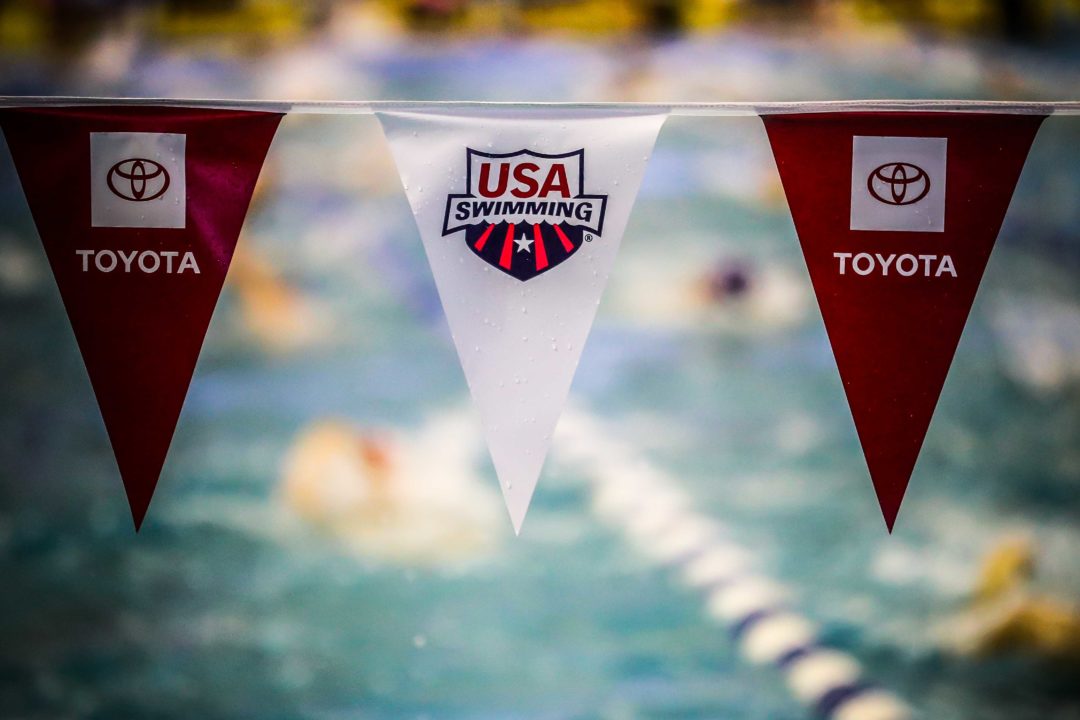Athletes who earned funding from USA Swimming for the 2019-2020 season can receive that same level of funding for 2021 regardless of their national rank.
That’s one of the big headlines of USA Swimming’s updated Athlete Partnership Agreement, or APA. The APA lays out funding for top professional swimmers and USA Swimming National Teamers. Qualifying athletes who sign the APA receive monthly stipends from USA Swimming, but also have to meet certain requirements, including submitting training and competition progress reports, attending at least two Pro Swim Series meets and making at least two other appearances at charity or speaking events.
How it Works
You can see the full January-June 2021 APA here
Typically, the APA breaks down several levels of funding based on an athlete’s world rank. Most recently, 52 athletes (26 men and 26 women) have been able to earn the top level of APA funding for pool swimming. Athletes must be ranked in the top 16 in the world in an individual Olympic event, with no relay leadoffs, time trials, swim-offs or intermediate splits included.
However, if more than 26 men or 26 women are ranked inside the top 16 in an event, only the top 26 in world ranks can earn top-level funding. The new APA specifies that athletes ranked in the top 16 who don’t make that 26-person group will still be funded, only at a Tier 2 level.
The world ranks are based on times from January 1, 2019 through March 17, 2020.
Extending 2020 Funding Tiers
The big difference amid the coronavirus pandemic is that USA Swimming will honor an athlete’s funding tier from the 2019-2020 season. So if an athlete was earning funding pre-pandemic, they can keep that level of funding even if they hadn’t put up a top-16 world-ranked time before competition shut down last March.
If an athlete moved up in funding tier last year, they can move up from last year’s funding. But, effectively, no athlete can move down in funding due to the pandemic.
Funding Tiers
USA Swimming’s documents don’t list specific stipends for each tier yet, but we do have the 2019-2020 data to use for a rough comparison.
There are a handful of different funding tiers: Athletes with a world rank between #1 and #8 have typically gotten the highest funding. Athletes with a world rank between #9 and #16 get a lower funding. Athletes who don’t sign the APA for one reason or another get less funding (but don’t have the extra responsibilities that go with signing the APA). And athletes who are a top-4 ranked American in a relay event, but don’t otherwise qualify for funding, can earn a relay-level funding.
2019-2020* Monthly Stipends
*The new numbers for 2021 aren’t yet available, but typically the stipends have gone up slightly each year.
| PRO | NCAA |
HIGH SCHOOL
|
|
| World Ranking 1-8 | $3,244 | $1000/$1750 | $1,000 |
| World Ranking 9-16 | $2,163 | $500/$875 | $500 |
| Non-APA Rank 1-8 | $1,892 | — | — |
| Non-APA Rank 9-16 | $946 | — | — |
| Relay Funding | $1,820 | $500/$875 | $500 |
2020-2021 Pro Swim Series Appearance Bonuses
The new APA does lay out the exact amount of money each tier will receive as a one-time Pro Swim Series appearance fee. Athletes must compete in at least two full days of the PSS and place in the top 8 in aggregate results of all sites:
| Tier |
One-Time Appearance Fee
|
| World Ranking 1-8 | $1,000 |
| World Ranking 9-16 | $500 |
| World Ranking 7-32 | $300 |
| Member of the 2020-2021 National Team | $300 |

So Reagan’s world record lead off backstroke doesn’t count?